The optical staining of Micrographs - But which view is objective?
When I started working on my micrograph project I tried out a lot of different ways of optical staining, al these ways of optical staining have there pro’s and con’s. But which of these used techniques is objective and is showing the real truth? Are there more truths?
This question is still going trough my mind when working on this project cause when people ask me wow is this real? What is the right answer? What answer are they looking for? Does it matter which one is real?
Pick me!
When it comes to “crating a curated reality” under the microscope there are a a lot of options, all resulting in a different reality. So to get good results showing the differences in techniques I used the 2,3-dihydroxybutanedioic acid compound.
Also known as tataric acid, Tartaric acid is a white crystalline organic acid that occurs naturally in many plants, most notably in grapes. Its salt, potassium bitartrate, commonly known as cream of tartar, develops naturally in the process of winemaking. It is commonly mixed with sodium bicarbonate and is sold as baking powder used as a leavening agent in food preparation. The acid itself is added to foods as an antioxidant and to impart its distinctive sour taste. Tartaric is an alpha-hydroxy-carboxylic acid, is diprotic and aldaric in acid characteristics, and is a dihydroxyl derivative of succinic acid.
2,3-dihydroxybutanedioic acid
Viewed with different optical staining techniques
Cross-polarized + Berek filter illumination
sample contrast comes from the rotation of the polarized light trough the sample “and optically colored with a half wave length filter”.
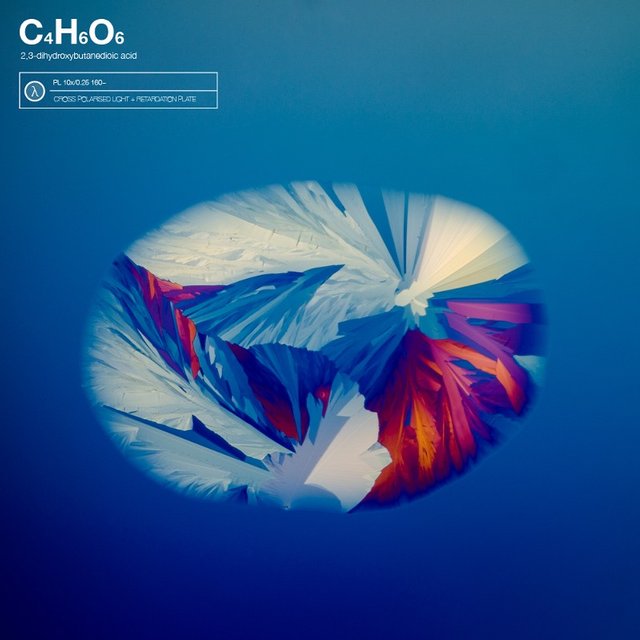
Cross-polarized illumination
sample contrasts comes from the rotation of polarized light trough the sample.
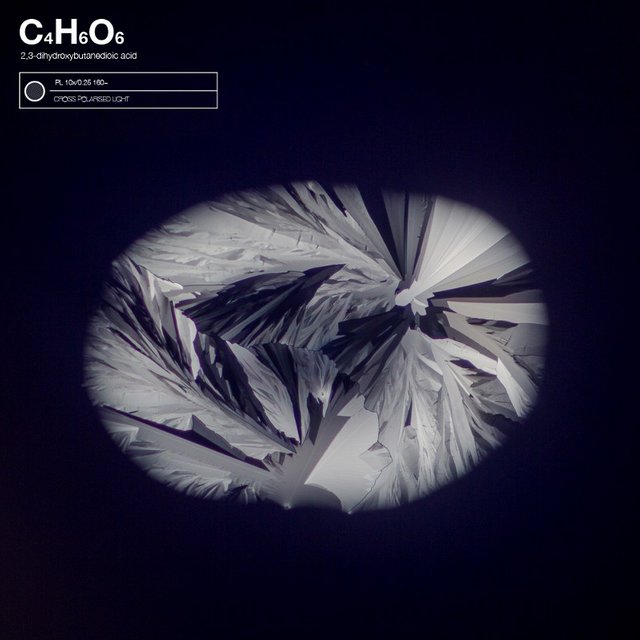
Dark field illumination
sample contrast comes from light scattered by the sample.
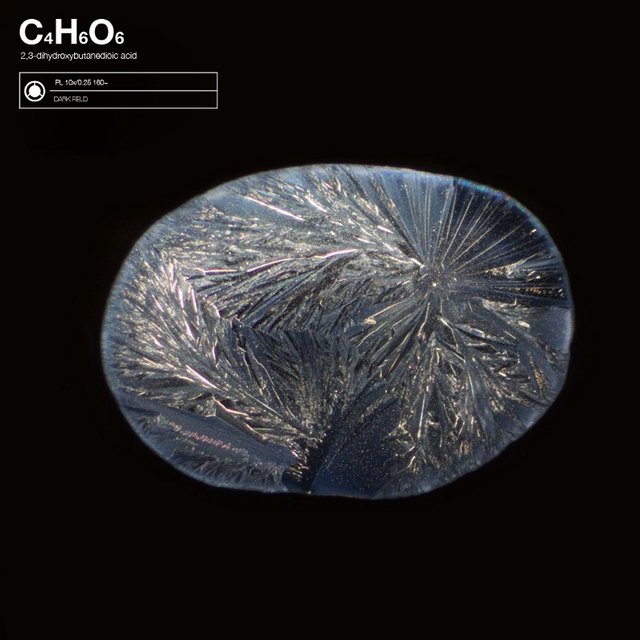
Oblique illumination
The images has the appearance of a tree-dimensional object under very oblique illumination, causing strong light and dark shadows on the corresponding faces.
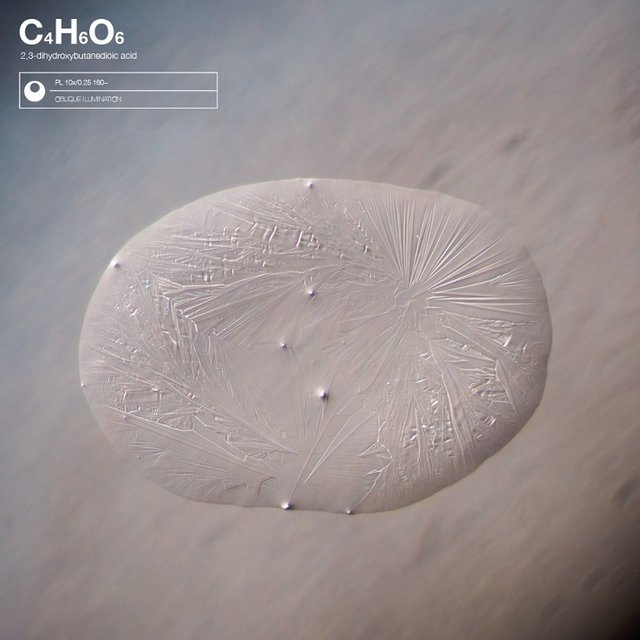
Bright field illumination
sample contrast comes from absorbance of light in the sample.
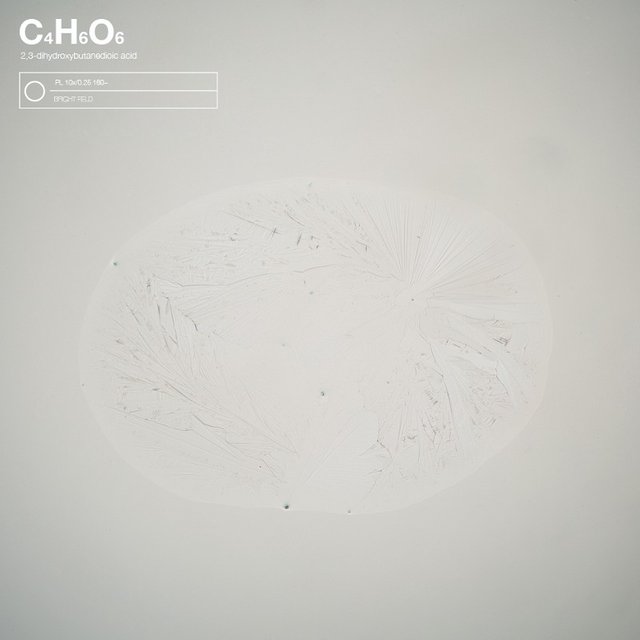
If it comes to science, there would probably be “one” right answer according to the regulations. But in this case I guess its all about form and taste.
I found your dark fields very appealing, so thank you for the layman-friendly comparison.
Cross-poralization is something I love to do with mirrored noise in photoshop and anisoptropic filters.
The cross-polarized Berek has simply too many colors for my taste :)
What really, really annoys somehow with the oblique illumination are the... what shall I call them, vulcan-thingies?... poking out.
I originally wanted to find the bright field a bit... contrastless but then I had an epiphany and wonder if you are thinking the same thing I am thinking perchance and then I would say this one if that's what you're asking.
Why wouldn't the shrimp share his treasure? -Because he was a little shellfish.
Keep up the great work @mauricemikkers
Upvoted
Nice @mauricemikkers
Shot you an Upvote :)
Hi! This post has a Flesch-Kincaid grade level of 9.4 and reading ease of 58%. This puts the writing level on par with Michael Crichton and Mitt Romney.
Real knowledge is to know the extent of one's ignorance.
Nice @mauricemikkers
Shot you an Upvote :)